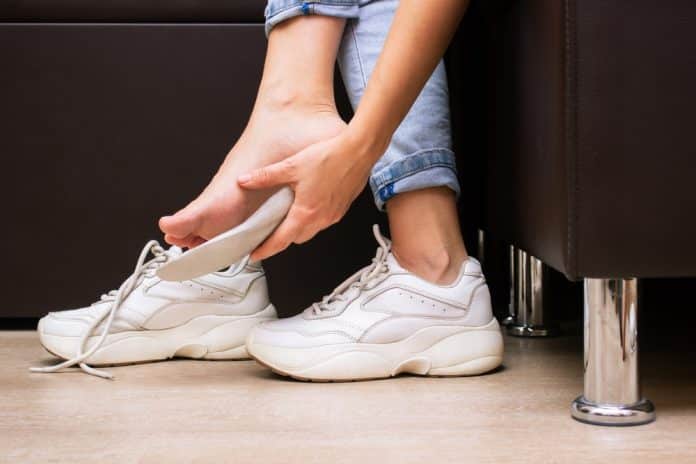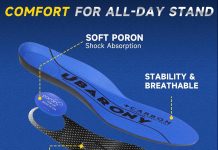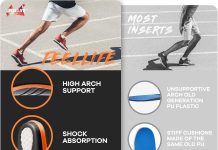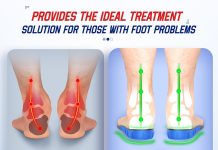Wearing orthotics can have various effects on our bodies, and it’s essential to be aware of the potential side effects. From discomfort and muscle weakness to changes in posture and gait, orthotics can impact our overall movement and body alignment.
Additionally, some individuals may experience skin irritation or blisters due to friction caused by the orthotic device. As we explore the side effects of wearing orthotics, we must consider the benefits and potential drawbacks of these corrective aids.
Foot pain and discomfort
Causes of foot pain and discomfort
When wearing orthotics, it is possible to experience foot pain and discomfort. This can occur due to a variety of reasons. One common cause is wearing ill-fitting orthotics that do not correctly support the feet. If the orthotics are too tight or put pressure on specific areas of the feet, it can lead to pain and discomfort. Additionally, if the orthotics do not provide enough cushioning or shock absorption, it can put excessive strain on the feet, resulting in pain.
Worsening foot pain
Wearing orthotics can sometimes lead to a worsening of foot pain. This can happen if the orthotics do not align correctly with the feet or if they do not address the underlying cause of the pain. For example, suppose someone is experiencing foot pain due to a structural issue in the foot, such as a misalignment or instability. In that case, orthotics may not alleviate the pain entirely. In such cases, the orthotics may exacerbate the pain by not providing the necessary support or correction.
Discomfort during the initial adjustment period
During the initial adjustment period of wearing orthotics, it is expected to experience some discomfort. This is because the feet need time to adapt to the new support and alignment provided by the orthotics. Initially, the muscles and tissues in the feet may feel strained as they adjust to the changes. It is important to gradually increase the duration of wearing orthotics to allow the feet to adapt. However, if the discomfort persists or worsens over time, it is essential to consult a healthcare professional.
Skin irritations and allergies
Causes of skin irritations
Skin irritations can be one of the side effects of wearing orthotics. Several factors can cause this. One common cause is friction between the orthotic device and the skin. If the orthotics are not adequately padded or rubbed against the skin, it can lead to irritation, redness, and blisters. Additionally, some individuals may be allergic to the materials used in the orthotics, such as latex or certain adhesives. This can result in allergic reactions, including rashes, itching, and swelling.
Symptoms of skin irritations
Skin irritations caused by wearing orthotics can present with various symptoms. Common symptoms include redness, pain, tenderness, swelling, and blisters. In more severe cases, individuals may experience peeling or flaking of the skin. These symptoms can significantly impact comfort and mobility, making it essential to address any skin irritations promptly to prevent further complications.
Allergic reactions to orthotic materials
In some cases, individuals may experience allergic reactions to the materials used in orthotics. Allergic reactions can range from mild to severe and can include symptoms such as itching, redness, swelling, and hives. For individuals with known allergies, it is essential to choose orthotics made from hypoallergenic materials carefully and consult a healthcare professional to ensure compatibility with their specific needs.
Muscle and joint fatigue
Increased strain on muscles and joints
Wearing orthotics can sometimes lead to increased strain on muscles and joints. This can occur if the orthotics do not provide adequate support or the foot is incorrectly aligned. When the foot is not adequately supported, it can lead to overpronation or supination, placing excessive strain on the muscles and joints. Over time, this increased strain can result in muscle fatigue and joint discomfort.
Tiredness and soreness in muscles
Muscle fatigue and soreness are common side effects of wearing orthotics. As the body adjusts to the changes in foot alignment and support provided by the orthotics, it may cause the muscles to work harder than usual. This increased workload can lead to muscle tiredness and soreness, especially in the lower legs and feet. It is important to gradually increase the duration and intensity of orthotic use to allow the muscles to adapt and minimize these side effects.
Joint stiffness and discomfort
Orthotics that do not provide proper alignment and support for the feet can cause joint stiffness and discomfort. When the foot is not aligned correctly, it can lead to misalignment and increased joint stress, particularly in the ankles, knees, and hips. Over time, this can result in joint stiffness, limited range of motion, and discomfort. It is crucial to ensure that orthotics are correctly fitted and address the specific needs of the individual to minimize these side effects.
Changes in foot biomechanics
Altered foot position and gait
Wearing orthotics can lead to changes in foot position and gait. The purpose of orthotics is to correct or improve foot biomechanics, but if not properly prescribed or fitted, they can alter the natural position and movement of the foot. This can lead to imbalances in muscle activation and distribution of forces, potentially resulting in further foot and lower limb issues.
Impact on natural foot arch
Orthotics can have an impact on the natural arch of the foot. Flat feet or high arches can benefit from orthotic support, but if the orthotics are not tailored to the individual’s specific arch type, it can interfere with the natural foot arch. This can lead to discomfort, instability, and an increased risk of developing muscle imbalances.
Increased risk of muscle imbalances
Wearing orthotics that do not adequately address an individual’s specific foot biomechanics can increase the risk of muscle imbalances. When specific muscles in the feet, ankles, or legs are consistently overused or underused due to improper foot alignment, it can result in muscle imbalances. These imbalances can contribute to further foot and lower limb issues, potentially leading to pain and limited mobility.
Adverse effects on balance
Disturbed proprioception
The use of orthotics can disturb proprioception, which is the body’s ability to sense the position and movement of the feet and limbs. Orthotics can provide a false sense of stability and affect the feedback loop between the feet and the brain. This disturbance in proprioception can impact balance and increase the risk of falls or accidents, particularly in older individuals or those with pre-existing balance issues.
Reduced stability and coordination
When wearing orthotics, there is a potential for reduced stability and coordination. If the orthotics do not provide optimal support or alter the natural foot alignment too drastically, it can affect the body’s ability to maintain balance and coordinate movements. This can make walking or running more challenging and increase the risk of accidents or injuries.
Increased risk of falls or accidents
Due to the potential disturbance in balance, stability, and coordination, wearing orthotics can increase the risk of falls or accidents. This is especially true for individuals who rely heavily on their proprioceptive feedback or have balance issues. It is crucial to carefully assess the impact of orthotics on an individual’s balance and stability to ensure their safety and prevent falls or accidents.
Negative impact on athletic performance
Constrained muscle movements
Orthotics can sometimes constrain muscle movements, mainly if they are overly rigid or restrictive. While orthotics are designed to provide support and stability, if they limit the natural range of motion of the feet and lower limbs, it can negatively impact athletic performance. Activities that require significant foot and leg movements, such as running, jumping, or agility exercises, may be hindered by using orthotics that impair muscle movements.
Hindered natural foot function
The use of orthotics can hinder the natural function of the feet. When the feet are not allowed to move and flex naturally, it can affect the efficiency and fluidity of movement. This can be especially problematic for athletes who rely on the proper functioning of their feet for optimal performance. It is essential to balance providing support with orthotics and allowing for natural foot function.
Reduced power and agility
Orthotics that restrict natural foot movement and limit muscle activation can lead to a reduction in power and agility. The ability to generate force and execute quick, explosive movements can be compromised when the feet cannot move and function optimally. Athletes who rely on power and agility, such as sprinters, basketball players, or dancers, may find their performance impacted by wearing orthotics that hinder these essential aspects of movement.
Nerve compression
Pinched nerves
Wearing orthotics that do not adequately distribute pressure or relieve excessive strain can lead to nerve compression. Pinched nerves can occur when the nerves in the feet or lower limbs become compressed or irritated, resulting in symptoms such as tingling, numbness, and pain. If the orthotics are not correctly fitted or do not adequately address individual biomechanical needs, it can lead to nerve compression and related discomfort.
Tingling or numbness in the feet
A common symptom of nerve compression caused by ill-fitting orthotics is tingling or numbness in the feet. This sensation can range from mild to severe and may affect one or both feet. Tingling or numbness can indicate nerve irritation or damage and should be addressed promptly to prevent further complications.
Radiating pain in the legs or lower back
Nerve compression in the feet can also manifest as radiating pain in the legs or lower back. When the nerves in the feet are compressed, the pain can travel along the affected nerve pathway, causing discomfort in other body areas. It is essential to consult with a healthcare professional to determine the underlying cause of the radiating pain and develop an appropriate treatment plan.
Dependency on orthotics
Potential weakening of foot muscles
Wearing orthotics for extended periods can potentially weaken the foot muscles. When external support is consistently provided, the muscles in the feet may become reliant on the orthotics and weaken over time. This can result in decreased muscle strength and stability, making it more challenging for the feet to function optimally without the support of orthotics.
Reliance on external support
Orthotics can create a dependency on external support, potentially leading to a reliance on the devices for everyday activities. This reliance can hinder the natural functioning and strength of the feet and may make it difficult for individuals to transition to activities without using orthotics. It is essential to work with a healthcare professional to determine the appropriate duration and extent of orthotic use to minimize reliance and maintain foot strength.
Difficulty in functioning without orthotics
As a result of potential muscle weakening and reliance on orthotic support, some individuals may find it challenging to function without orthotics. The sudden removal of orthotics can cause instability, discomfort, and difficulties in balance and mobility. It is advisable to gradually reduce reliance on orthotics under the guidance of a healthcare professional to ensure a smooth transition and minimize any negative impact on foot function.
Financial costs
Expensive orthotic devices
Orthotic devices can be expensive, especially when custom-made or tailored to specific biomechanical needs. Purchasing orthotics, especially if multiple pairs are required for different activities or footwear, can add up over time. This financial burden can be a deterrent for some individuals, particularly those who may require ongoing support or replacement devices.
Replacement or adjustment expenses
In addition to the initial cost of orthotics, there may be ongoing expenses for replacement or adjustment. Over time, orthotics may wear out or lose effectiveness, requiring replacement.
Additionally, if the orthotics need to be readjusted or modified to suit the individual’s changing needs better, it can incur additional costs. These financial considerations should be taken into account when considering orthotic use.
Additional costs for specialized footwear
To accommodate orthotics, individuals may need to invest in specialized footwear that can accommodate the added bulk or structure of the devices. This may include broader or deeper shoes, which can come at a higher cost than standard footwear options.
These additional costs for specialized footwear should be considered when calculating the overall financial impact of orthotic use.
Psychological impacts
Emotional distress and frustration
Experiencing foot pain, discomfort, or limitations in mobility due to orthotic use can cause emotional distress and frustration. The inability to participate in activities easily or the constant discomfort can affect an individual’s emotional well-being. It is essential to address these psychological impacts and seek support or counseling if needed.
Reduced self-confidence in mobility
Orthotics that restrict movement or cause pain can impact an individual’s self-confidence in their mobility. Feeling limited or dependent on external devices can erode self-esteem and make individuals hesitant to engage in physical activities. It is crucial to address any self-confidence issues and build a positive mindset to maintain overall well-being.
Negative impact on body image
The presence of orthotics and the associated challenges and limitations they may bring can negatively impact body image. Some individuals may feel self-conscious about wearing orthotics or perceive it as a sign of weakness.
It is important to remember that orthotics are a tool for support and should not define one’s self-worth. Promoting positive body image and self-acceptance can help individuals navigate any negative impact on body image caused by orthotic use.
In conclusion, wearing orthotics can have various side effects that individuals should be aware of. These side effects include foot pain and discomfort, worsening of foot pain, skin irritations and allergies, muscle, and joint fatigue, changes in foot biomechanics, adverse effects on balance, negative impact on athletic performance, nerve compression, dependency on orthotics, financial costs, and psychological impacts.
It is essential to address any concerns or side effects experienced while wearing orthotics and consult a healthcare professional to ensure optimal foot health and overall well-being.








































